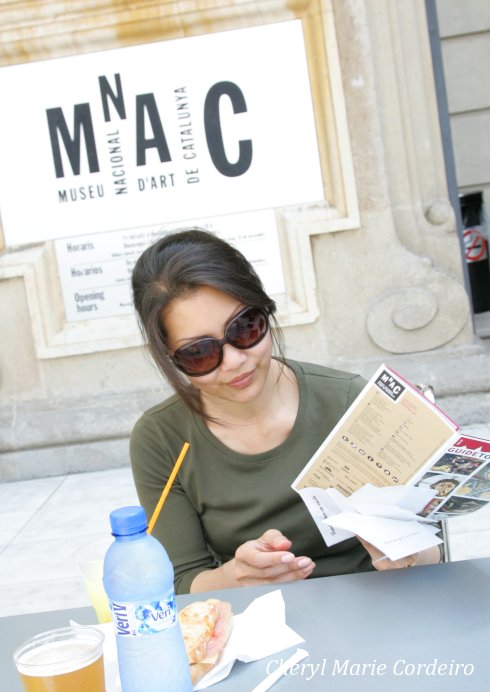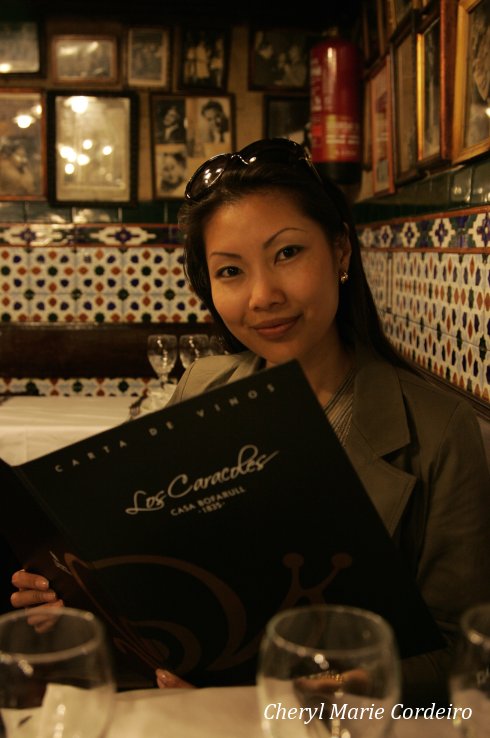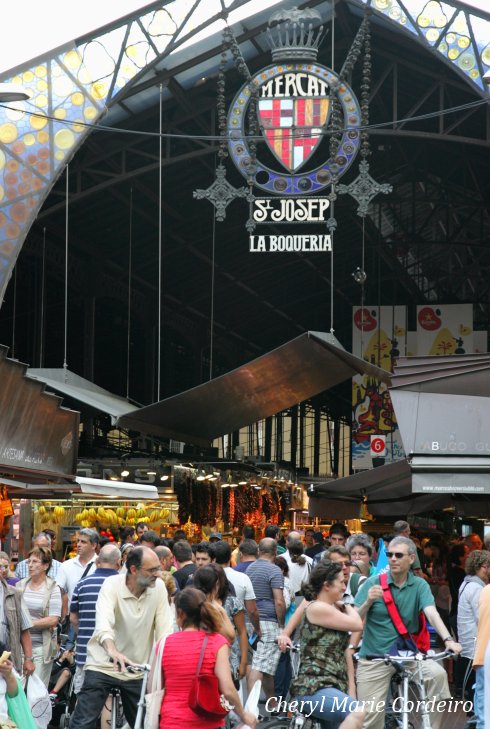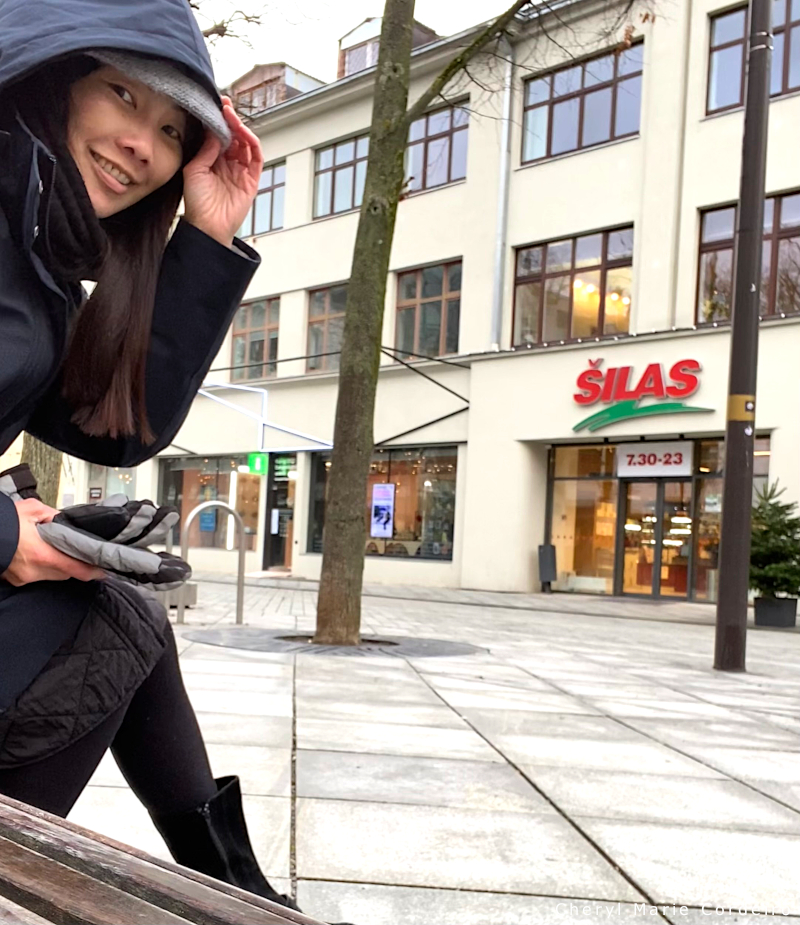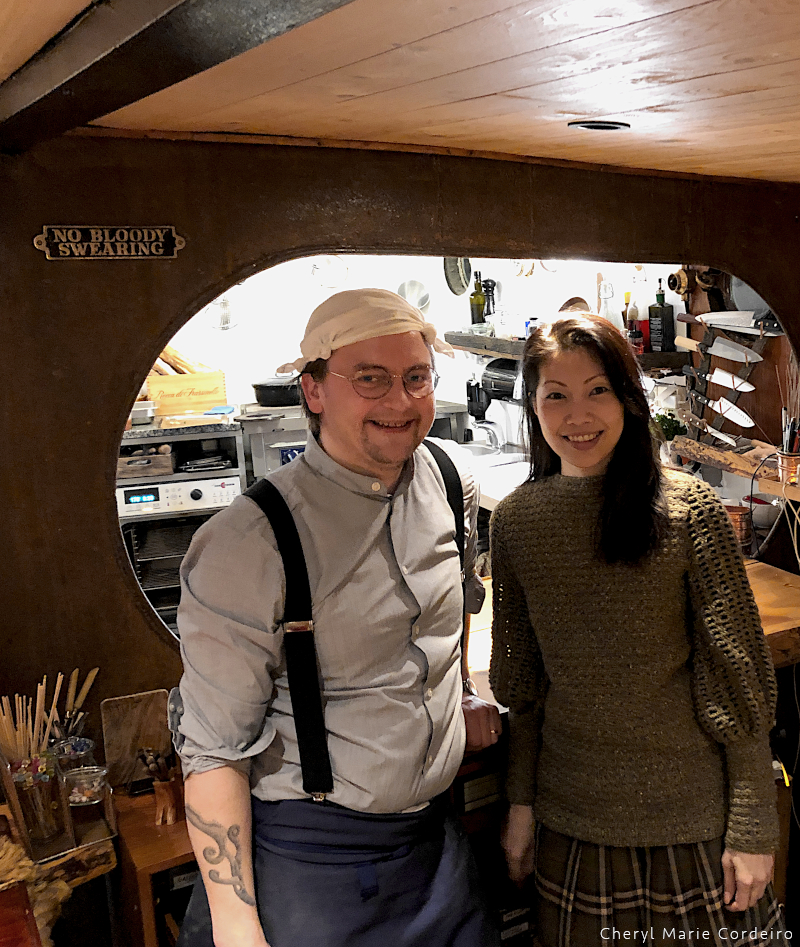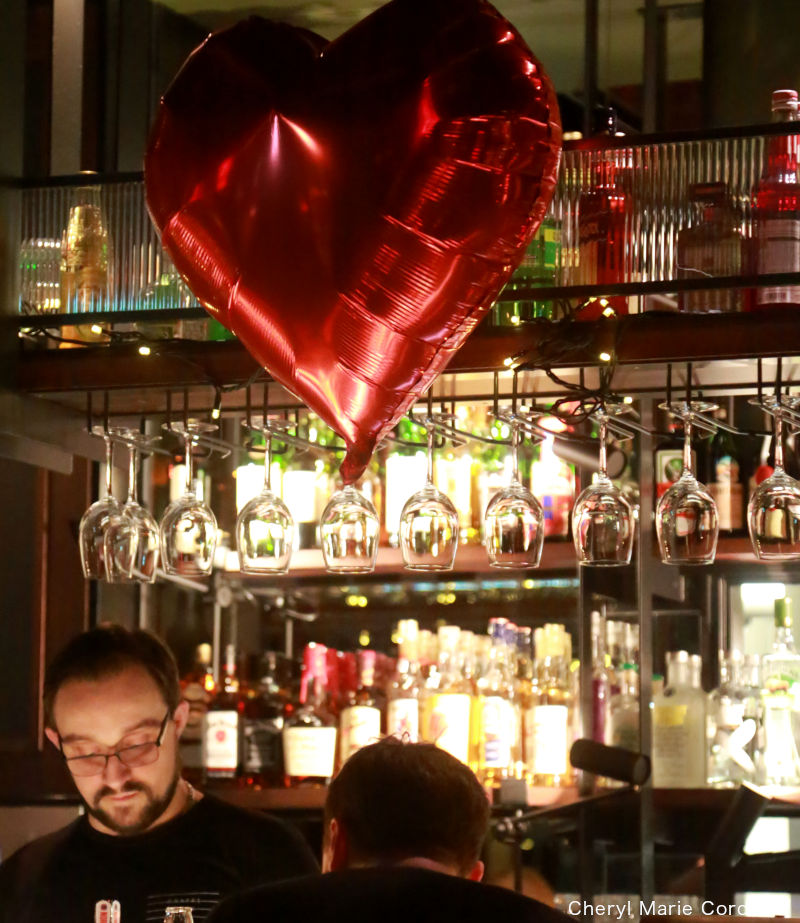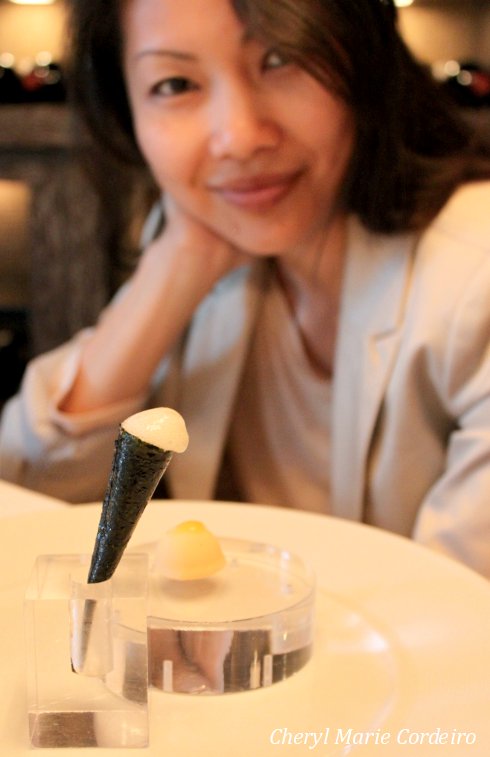
Contemplating art in culinary form, through the Mediterranean perspective of Chef Paco Pérez at Enoteca, Hotel Arts Barcelona.
JE Nilsson and CM Cordeiro Nilsson © 2011
I think Spain is one of the places where you should go today, to refresh the eyes with aspects of art, design and architecture that are cutting edge creative and new.
In the 1910-20s Spain and Barcelona were part of the movement that invented modernism, but when you visit Barcelona today, you realize that they didn’t stop there. They just went on, turning and twisting every rock they met on the road of human artistic expressions. This progression of ideas is most visible in architecture and unexpectedly, in modern culinary art.
It is also obvious that while being sat on by suffocatingly conservative forces like Generalissimo Franco and his likes for the best part of the 20th century, this vital people never stopped expressing themselves and just found new ways of doing exactly what they wanted anyway.
And while contemplating your impressions of the city of Picasso, Miro, Gaudi and Dali I can suggest no better place to sit down and enjoy an avant garde meal, building on these very traditions, than at the Enoteka de Paco Pérez at Hotel Arts in Barcelona.
Maybe enoteca is not an ideal name of the restaurant run by the El Bulli trained chef Paco Pérez, but wine is certainly an important part of the experience.
Enoteca carries the meaning of a “wine library” or a wine bar where you can try out wines by the glass, and of course the Enoteka de Paco Pérez at Hotel Arts is a little bit beyond that.
The cooking is brilliant but bordering to eccentric and somehow you sense the influences from all the artists that has made Barcelona famous. Personally I would also like to say that this is not where I would bring my friends for a dinner without asking them first what they would want from a night out.
Barcelona is so full of very good tapas bars and rustic Catalonian eateries that a restaurant that might in fact have picked up plenty of inspiration from the surrealist painter Salvador Dalí, might not be a first on your Barcelona bucket list.
The ambiance also adds to the overall experience. This library of wines is reflected in the design of the place. Stacks of bottles of wines replace library books in black shelves that cover the walls.
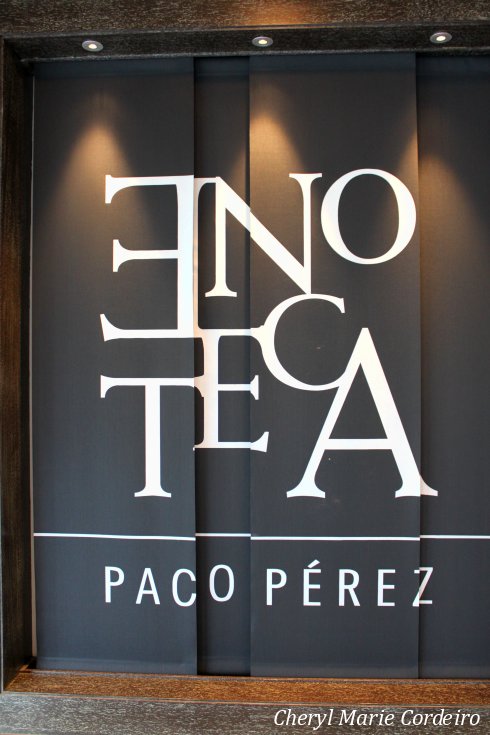
If you feel like you would like to try this out, the Barcelonians who also frequent this place, like to dine late, so as a jet-lagged tourist you would actually find yourself happily first in the cue in a more or less empty restaurant.
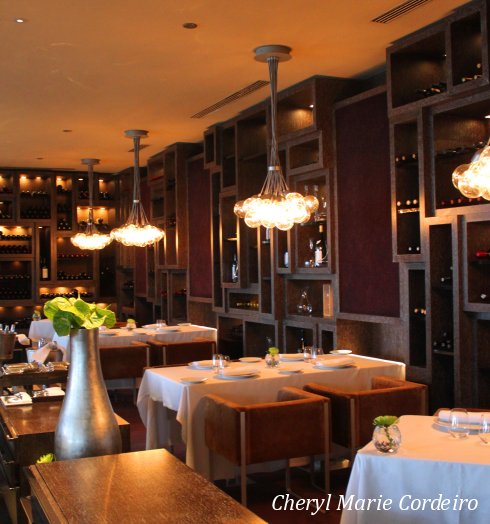
The dark wood and dim orange tint from the lighting of the interior of the restaurant gives a feeling of being swept away into your very own corner of the world, a comfortable cocoon of space and time, where in the next couple of hours, you’re left to explore at will, any culinary whim and fancy that the restaurant can offer!
With so much passion and wide eyed wonder at what goes on in the kitchen as was explained to us during our sitting, it was difficult for us to keep a cool front and not bounce from our table straight into the kitchen to get a glimpse first hand on how all of this was orchestrated.
Our pictures are in no way representative of what an evening here can offer but just a few random samples we don’t mind sharing.
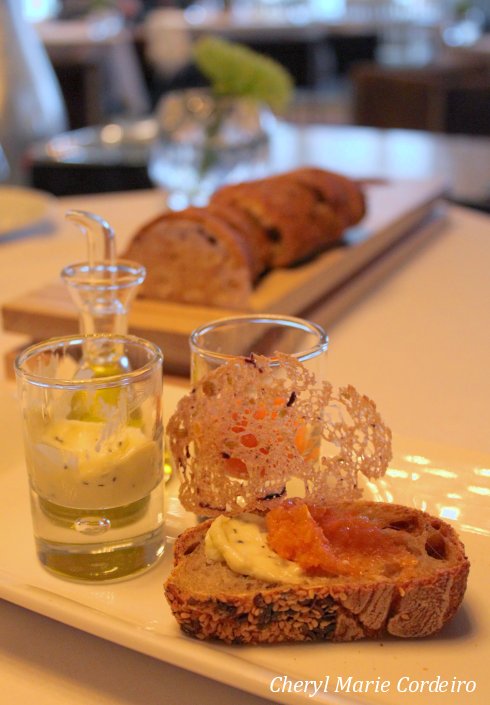
Some bread, just for a start.
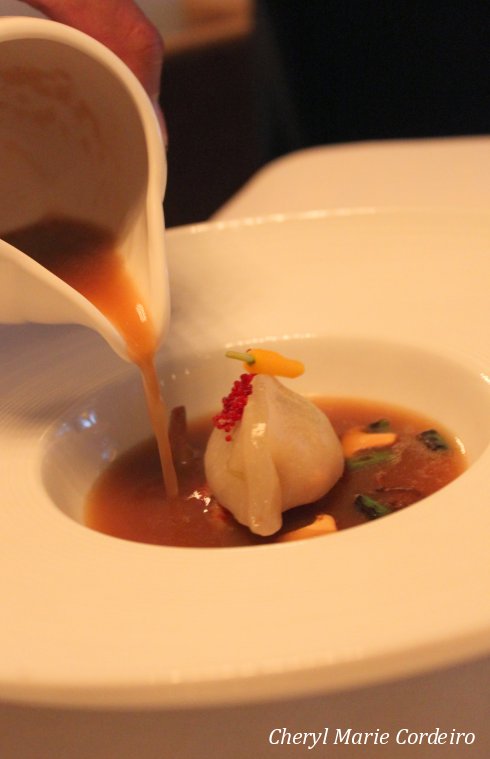
Besides that the presentations of the dishes were on the whole different and ingeniously combined for each dish, the ambition was as I see it, focused on bringing out the inner soul of fairly common ingredients and actually surprise you with what things you thought you knew could actually taste like.
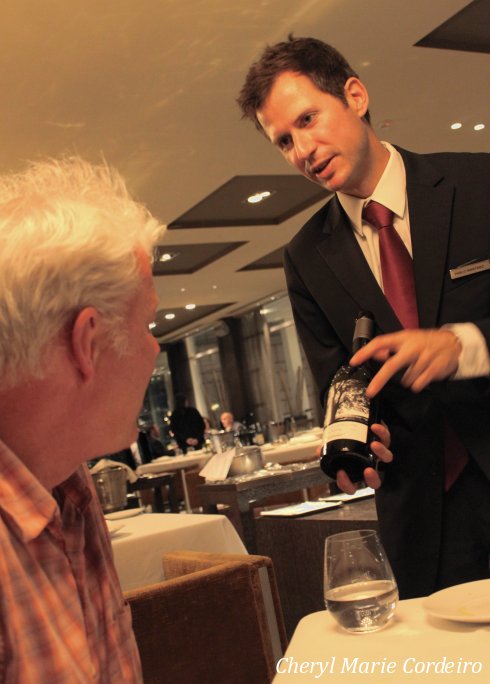
The dining experience was softly overseen by your personal sommelier who suggested different wines throughout the dinner that in various ways enhanced or changed how the different dishes came out.
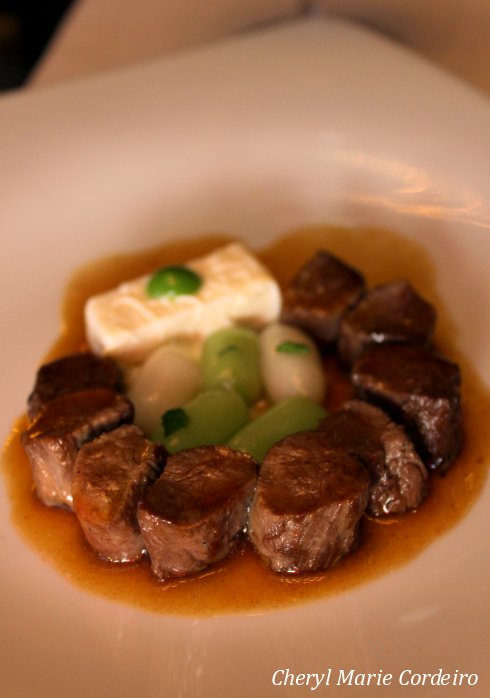
The menu offered many opportunities to get a glimpse of what Paco Pérez’s creative directorship and artistry in the kitchen could create.
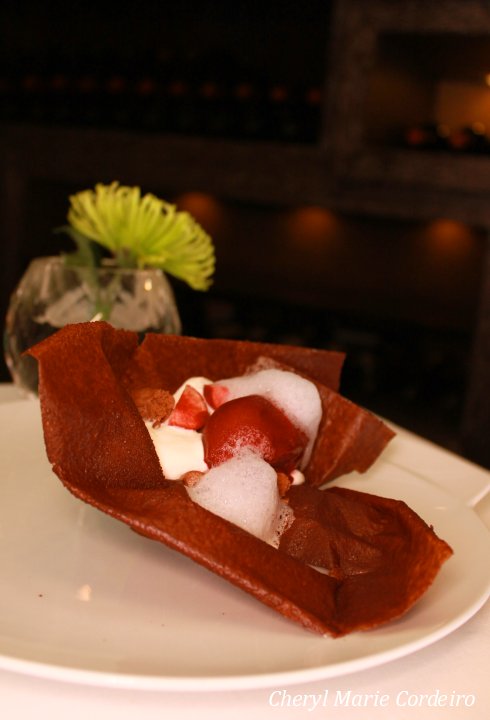
If you care to ask anyone of the friendly staff, that probably had marveled at the same thing as you did, you might find them well prepared to explain what went on in the kitchen, how each dish was put together and the techniques behind the making and presenting of the food.

A dinner here takes time, interest and a sense of humour. Why humour you might say, well, ultimately food is there to be enjoyed and sometimes maybe the imaginative efforts of this extraordinary kitchen is stretched just a tiny bit too hard. The food is good, it really is good, but hey – come on – some of the dishes are there just to make you smile.
To come up with a single recommendation regarding Enoteca de Paco Pérez, I can do no better than to suggest to take the evening off and dine with the broadest of mindsets, expecting the unexpected. Sit back and enjoy the ride from beginning to end and focus on selecting your favourite wines together with the amicable help of the restaurant’s sommelier.
